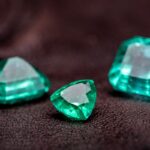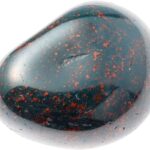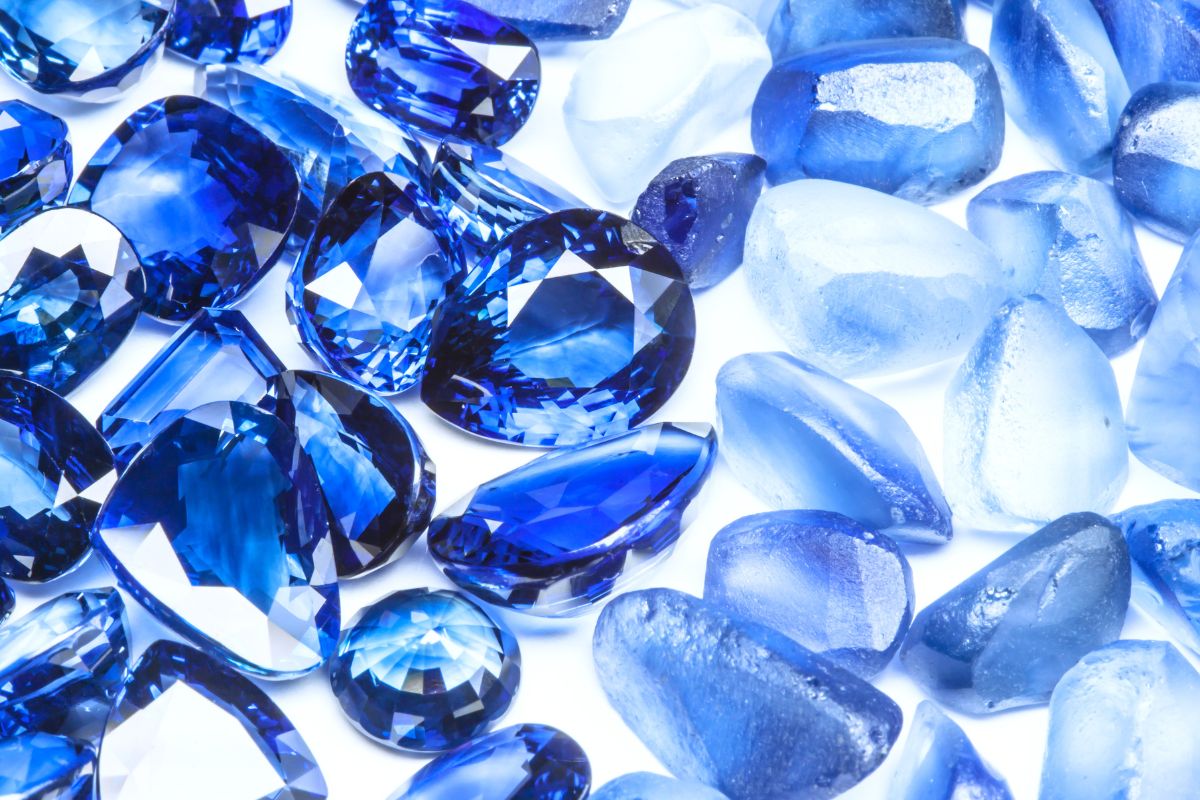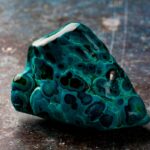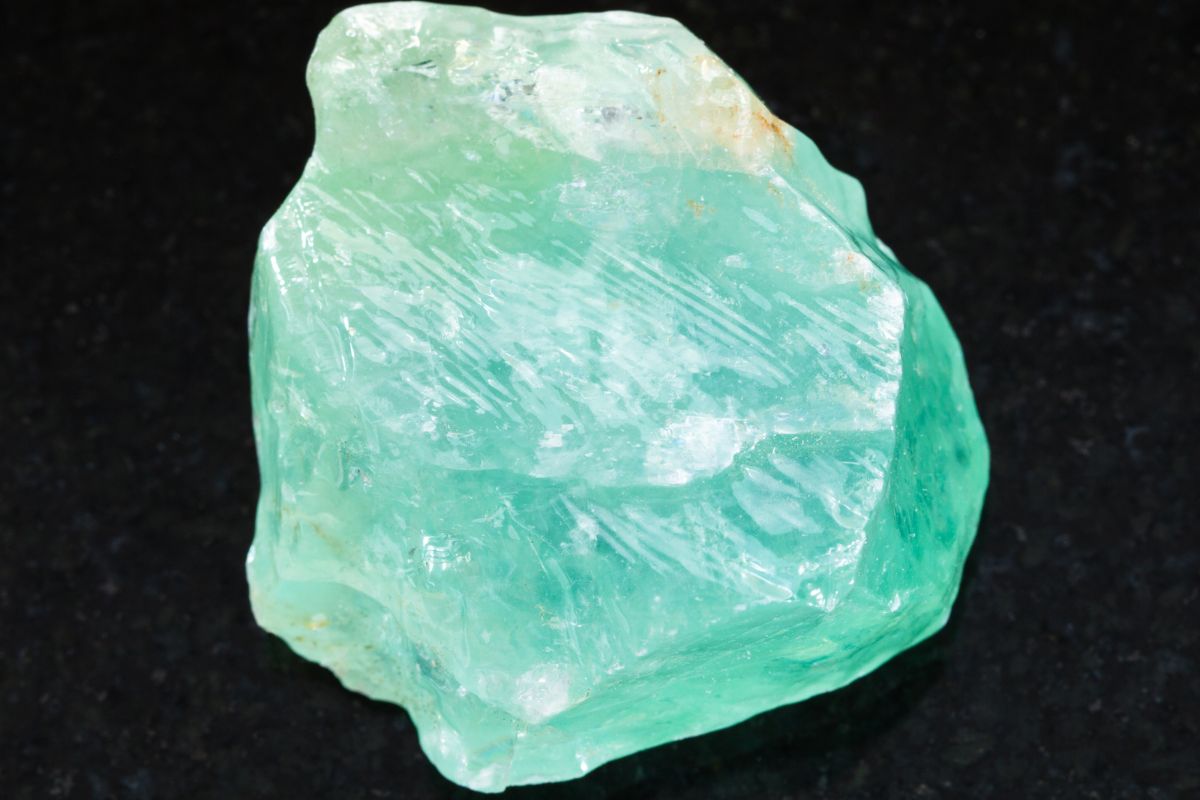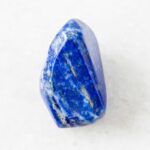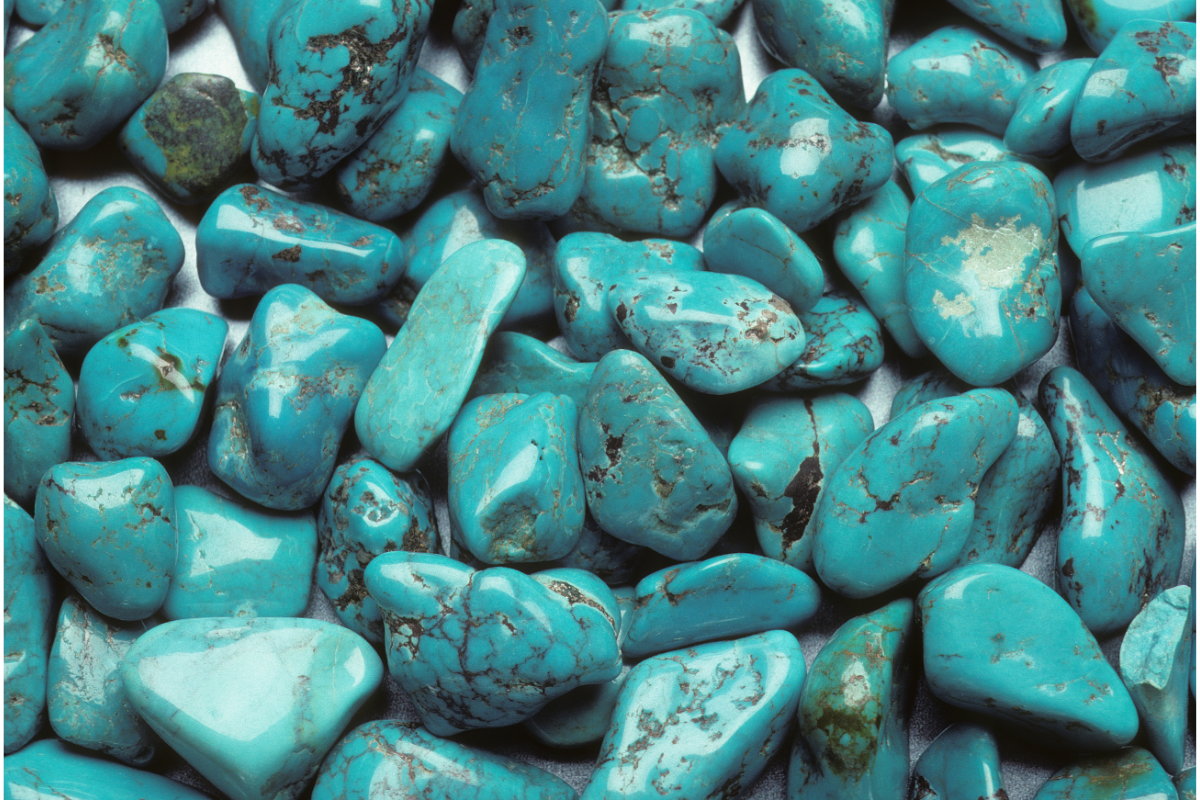Peridot is a captivating green gemstone highly sought after for its unique properties.
However, the increasing demand for this precious gem has led to the introduction of numerous synthetic and imitation versions in the market.
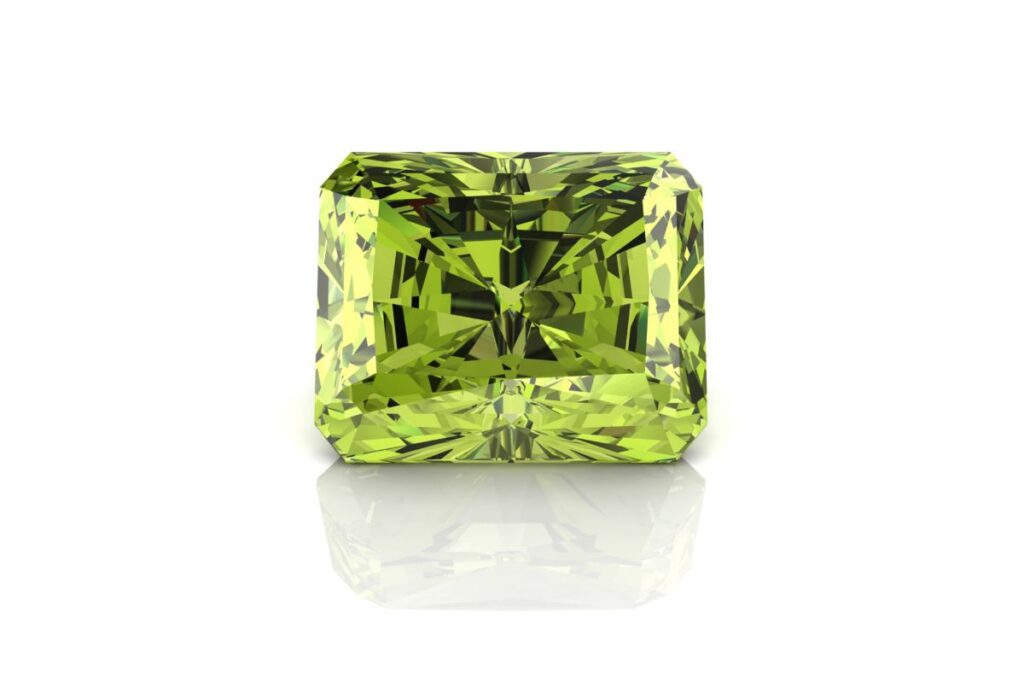
Whether you are a collector, a jeweler, or someone interested in working with peridot for its healing abilities, knowing how to distinguish a genuine peridot from a fake is essential.
This guide aims to offer a thorough examination of the methods to authenticate a peridot stone.
Let’s get into it.
The Importance Of Making Sure Your Peridot Is Real
As with any crystal, when you’re looking to purchase peridot, it’s important to make sure you’re getting the real deal. Why? Well, firstly, peridot is not a cheap crystal, so if you’re spending your hard-earned cash on it, you want to ensure it’s genuine.
Secondly, if you’re working with peridot for its physical and metaphysical healing abilities, then it’s important you’re working with the right stone for the job – and one that is real and not a fake.
Finally, by ensuring your peridot is real, you’re helping to avoid fuelling the fake market. By knowing exactly what you’re buying, you can avoid giving money to those who are looking to scam their customers.
Below, we will go into more detail to help you tell the difference between real and fake peridot crystals.
You may also like: How to activate Peridot.
Visual Inspection
Carrying out a visual inspection is a good place to start with identifying whether your peridot is real:
Color And Hue
Peridot is celebrated for its distinctive green hue, which can vary from yellowish-green to olive green.
Authentic peridots usually exhibit a uniform color, devoid of any color zoning or variations.
Although they might have a slight brownish or yellowish tint, this is not as evident as in fake or synthetic versions.
Therefore, when examining peridot, pay close attention to the color consistency.
Transparency And Clarity
True peridots should be transparent to translucent, giving the stone a radiant appearance.
Inclusions are common in natural stones, but they should not cloud the gem’s clarity significantly.
Any murkiness or opaqueness is usually a sign that the stone is not genuine peridot.
Refractive Index
A defining feature that sets peridot apart is its refractive index, which ranges from 1.65 to 1.69.
The refractive index contributes to the gemstone’s sparkle and luster, a characteristic hard to replicate in synthetic variants.
Special gemological tools like refractometers can help you determine the refractive index accurately.
Further reading: Does Peridot glow in the dark?
Shape And Cut
Peridot is versatile and can be cut into a range of shapes like round, oval, and pear.
However, certain complex shapes and facets are difficult to achieve with genuine material. If you find a peridot in an unusual cut, investigate further to ascertain its authenticity.
Physical Tests
Next up are the physical tests. We would encourage you to be cautious with these techniques as you don’t want to inadvertently damage your peridot:
The Scratch Test
Peridot has a Mohs hardness that falls between 6.5 and 7, positioning it somewhere between the hardness of a steel nail and that of quartz.
This means that while it can be scratched by harder substances like diamond, it should easily scratch softer materials, such as glass.
Conducting a scratch test can be risky, so it’s advisable to perform it cautiously to avoid damaging the stone.
Density And Specific Gravity
Peridot has a density of approximately 3.2 to 3.4 grams per cubic centimeter.
One can determine the density through a water displacement test, although this requires some expertise.
Nonetheless, density measurements offer a reliable method to authenticate peridot.
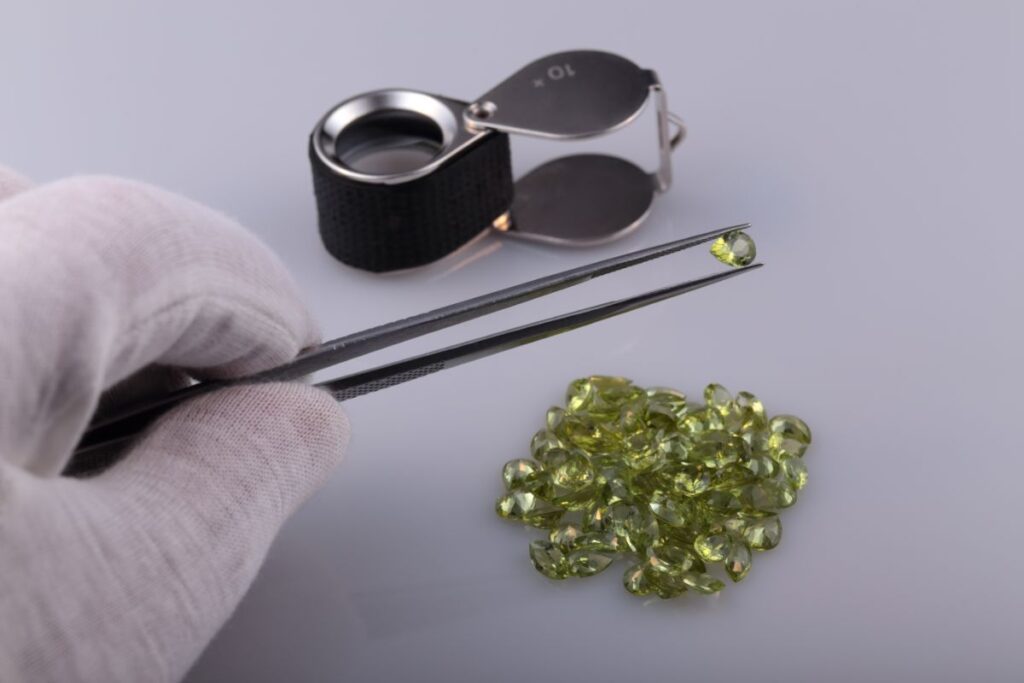
Advanced Testing Techniques
If it’s still unclear whether your peridot is real or not, there are further tests you can try:
Spectroscopy
Spectroscopy is a highly reliable method employed by gemologists to determine the elemental composition of gemstones.
A spectroscope analyzes the light that passes through the gemstone, revealing its interaction with the elements present in the stone.
The resulting spectral lines can provide conclusive proof regarding a peridot’s authenticity.
Consulting Certified Gemologists
For those who are not experts in gemology, consulting a certified gemologist is highly recommended. These professionals are equipped to conduct a series of specialized tests to offer a definitive verdict about the genuineness of a peridot.
Top Tips For Buying Genuine Peridot Crystals
The best way to tell if your peridot is real is to do the due diligence upfront before you make a purchase.
Here are some things to consider when purchasing peridot:
Price Evaluation
Peridots are generally more affordable than other green gemstones like emeralds, but this doesn’t mean they’re cheap.
Be wary of deals that seem too good to be true. Always compare prices from different vendors and check for market rates to ensure you are not buying a fake.
Vendor Reputation
Vendor credibility can significantly influence the authenticity of the gemstone you are purchasing.
Always buy from reputable dealers who are known for their integrity and transparency.
Check if the seller provides a return policy and guarantee on their products.
Online Reviews
Shopping online presents its challenges. However, online reviews and customer testimonials can be useful in assessing the quality and authenticity of a peridot gem being sold online.
Certification
When buying a peridot, it’s advisable to ask for a certificate of authenticity.
Such a document usually outlines important details about the gemstone, including its origin, dimensions, cut, and overall quality.
Reputed sellers often provide certification to back the authenticity of their products.
Up next: Is Peridot Valuable?
In Summary
Authenticating a peridot involves a layered approach combining visual inspection, physical tests, advanced techniques, and careful vendor verification.
Whether you are an enthusiast or a seasoned collector, this comprehensive guide should equip you with the knowledge needed to distinguish real peridots from fakes convincingly.
Always remember that when in doubt, consult a certified gemologist for a conclusive identification.
This multi-pronged strategy will ensure you invest in a genuine, high-quality peridot gemstone.
You may also like: Does peridot fade in the sun?
- 15 Crystals That Cannot Be Exposed To The Sun - January 7, 2024
- Malachite Vs Fuchsite – Benefits And Uses - January 7, 2024
- Malachite Vs. Green Jasper: Benefits And Uses - January 7, 2024


